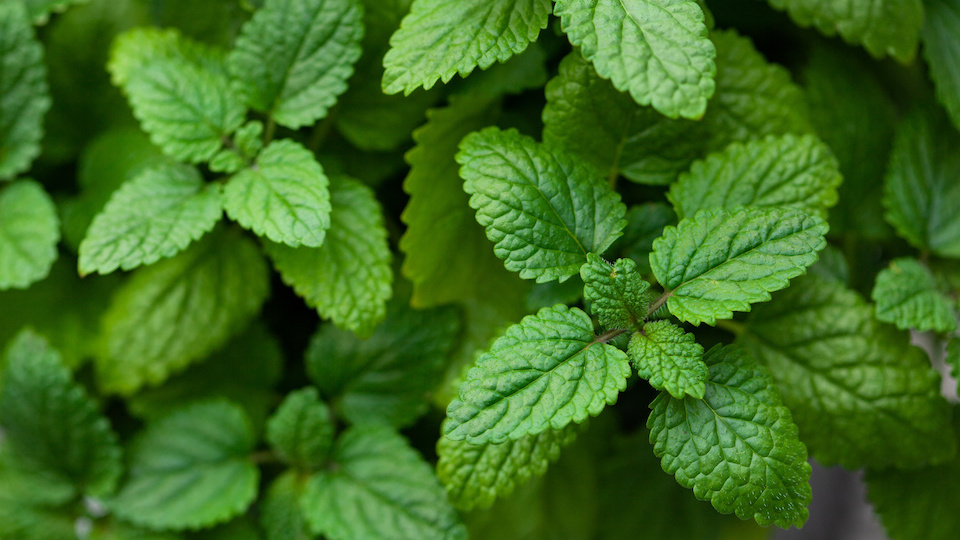Are you busy at work, busy with kids, busy with school, and just plain busy all the time? If so, you are not alone. Millions of Americans suffer from over-business, which leads to…you got it. Stress. There is nothing fun about being busy and feeling stressed about being busy. Quite simply, this is a recipe for disaster. Although it is important to slow down, on those days when you just can’t seem to catch a break, two easy-to-grow plants come to the rescue.
Lemon balm

A member of the mint family, lemon balm is most noted for its sweet, soothing lemony scent. Thanks to lemon balm’s high concentration of phytochemicals, the herb can be used to remedy several ailments. While historically used as a treatment for practically everything, recent research has noted that the herb’s mood-elevating and anti-anxiety properties may help treat stress-related conditions.
Lemon balm does best when grown from small plants. Transplant into the garden after all danger of frost has passed. One plant per square foot. This aromatic plant will grow indoors as long as it gets as much direct light as possible, at least six hours of solid sunlight each day. It also likes a steady supply of water, but it needs good drainage. Outdoors, it can be grown in just about any climate in an area that gets lots of sun – though some shade during the day is okay. Use rich, moist, well-draining soil and a little organic fertilizer. Lemon balm does not spread by underground runners like mint, but it will still spread seeds and begin to take over the garden if left unchecked. Trim it back to several inches tall a few times during the growing season.
Harvest fresh leaves any time once plants are mature. If you plan on drying the leaves, it is best to wait to harvest until you see flower buds. This is the time when the oils in the leaves are most potent. Using clean, sharp pruning shears, cut each stem directly above a pair of leaves. Although a second harvest may be possible in the fall, the first harvest is always the sweetest and most aromatic.
Wash and dry fresh lemon balm leaves and store them in a plastic bag in the refrigerator for up to five days. Another fun way to preserve lemon balm is to wash and dry leaves and place them in a sterilized glass jar.
Lavender

Lavender, a member of the mint family, is one of the most popular herbs used in the natural health and beauty industry. Few scents evoke the feeling of cleanliness and calm that this tender perennial does. Lavender has anti-inflammatory, antifungal, antidepressant, antiseptic, antibacterial, and antimicrobial properties. Plus, it has been shown to help alleviate anxiety, depression, and insomnia in many instances due to its sedative nature.
Although it isn’t as easy to start lavender seeds as other seeds, it is possible. However, the easiest way to start lavender plants is from cuttings or small plants purchased at your local plant nursery.
You can grow lavender indoors or out, though the plants do best outdoors. The English type is not only the sweetest and most widely grown, but it has a good tolerance for winter moisture and humidity as well. Make sure plants get at least six hours of full sun each day. Water young plants well but very little once they are mature. Lavender plants prefer slightly sandy, neutral pH, well-draining soil. Once established, it is best to prune new spring growth by cutting about one-third of the green stalks. Cut the entire plant down to eight inches from the ground in early spring once every three years to promote new growth and control the plant’s size. Provide a layer of mulch for winter protection in cooler regions.
Harvest lavender when the buds have formed, but the flowers are not yet open. Closed buds retain fragrance and color longer. Use clean, sharp bypass pruners and gather a small handful of long flower stems. When you harvest, leave behind at least two sets of leaves on the green part of the stem – do not cut back to the woody part.
Temple de-stressing technique
When the stress of the day seeks to consume you, grab a handful of fresh lemon balm leaves and fresh lavender leaves. Squeeze the leaves in your hands to release the volatile oils. Gently dab the leaves on your temples while breathing in deeply. You should feel an immediate sense of calm come over your mind and body. Repeat this a few times until you feel your stress melting away.
Happy Growing,
-Susan Patterson CBHC and Master Gardener



